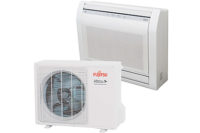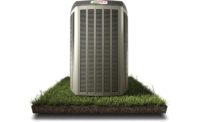Most customers are interested in saving money and increasing comfort, and a high-efficiency system is expected to do just that. But try bringing the topic of high-efficiency air movement and ventilation systems to the sales table. This turns a simple conversation to one of measurements, static pressure, airflow, duct installation, etc. Most consumers don’t even realize these things have an effect on the comfort of their homes, let alone the functionality of their HVAC systems. Oftentimes, that leaves the contractor wondering, “ In order for any service or technology to be successful, education is critical. High-efficiency air movement and ventilation are no exception. One difference, however, is who is being educated. When it comes to the topic of air movement, education is necessary for both the installer and the service technician. “We believe 100 percent in training our installers just like our technicians,” said Greg Wallace, president of Progressive Heating and Air, Newnan, Georgia. “We have even had some of our competitors laugh at us because they may have seen three or four of our installers in a class that they sent only service people to.” Wallace does this to address the education of both sides of the system. The installers build the foundation for proper function, and the service technicians maintain and repair the system. Not only does Wallace educate his team, but he also educates himself as he combs through installation and engineering data. “I have read more of this information in the last eight years than I did the previous 20,” he said. With a well-educated staff, contractors selling high-efficiency air movement and ventilation find their next educational target to be the customer. “We educate the client on the comfort benefits of continuous airflow and demonstrate the electrical savings with a cost calculator,” said John Boylan, general manager of Lakeside Service Co. Inc., Brighton, Michigan. “On residential replacement equipment, we also use the local utility incentives to add value and increase the ROI [return on investment] to the client.” What some contractors consider an upsell, others consider a must-sell. That is often the case for Jim Crist, HVAC specialist at U.S. Heating and Air, Denton, Maryland. If he is on a sales call, Crist makes customers aware of the multiple solutions available so that they can make an informed decision. “Knowledge is power,” he said. “If you can enlighten the customer about the product, they will buy it. I always explain the pros and cons to every product available if I am selling it.” Just as products come with a list of pros and cons, so does selling duct and air movement efficiency. Approaching HVAC from a duct efficiency design standpoint has cost Wallace jobs when it comes to customers strictly concerned about price. “We are definitely not the cheapest HVAC people in our area, and I would guess we are likely the most expensive,” he said. “I am not saying this to be bragging about what we do, because the cost does concern me. A bad installation, however, weighs on me more.” In Wallace’s experience, when he doesn’t check the duct system before installing a new system, he ends up making the repairs for free. He has also learned the hard way that selling multispeed equipment without perfect ductwork can produce problems and quickly. “You can have a crawl space full of sweaty ductwork on a five-speed a/c in Georgia if you don’t take the necessary precautions,” he said. “If we do everything correctly before we sell a job, the bottom line is much better than just selling boxes.” Wallace also explained that it takes time to accomplish a correct diagnosis and product suggestion for a customer. His company has procedures and a checklist in place to help its comfort specialists perform thorough inspection and duct testing before any pricing is ever presented to the homeowner. “Most of the responses from customers after these inspections are, ‘I didn’t see the other guys do that,’ or ‘They didn’t mention that,’” Wallace said. “Obviously, we don’t get every job, but I bet the other companies that do get the jobs after we have been there have a lot of questions to answer.” There are diverse approaches to what the National Comfort Institute Inc. (NCI) calls Performance-Based Contracting™. Boylan, who is a member of the association, noted that selling equipment, upgrades, and improvements this way is good for the profitability of the company, and it also creates a better customer experience after the installation. NCI offers multiple tools and educational courses for contractors looking to “deliver comfort, safety, and energy efficiency with proven documented results.” The association provides membership, technical training, sales and marketing training, as well as on-site and online training options, along with a plethora of resources. Another place to find assistance in performance-based contracting is through the National Balancing Council™ (NBC). Not only does the association provide support and training, but it also provides multiple resources, including more than 60 practical testing and balancing procedures lists (see below). Both associations offer specific certifications earned after completing training and testing. The following is an excerpt of one of the air test and balance procedure sample lists from the National Balancing Council™. The association provides over 60 of these lists for different applications, including duct traverse procedure, register/grille procedure, VAV testing procedures, and more. More information available at www.nbctab.org. — Source: National Balancing Council Publication date: 5/13/2019 Want more HVAC industry news and information? Join The NEWS on Facebook, Twitter, and LinkedIn today!BEGIN WITH EDUCATION
EXPLAIN IT
MOVE PAST THE BOXES
GET STARTED
AIR TEST AND BALANCE PROCEDURE
How to Sell High-Efficiency Ventilation
Tips to get started in performance-based contracting

CHECK LIST: It takes time to accomplish a correct diagnosis and product suggestion for a customer. Some companies have procedures and a checklist in place to help their comfort specialists perform thorough inspection and duct testing before pricing is ever presented to the homeowner.







